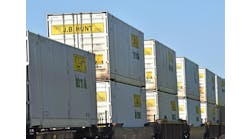While GDP increased 2.9% annualized in Q4, that doesn’t mean the freight economy followed, according to a report released on Jan. 30 from FTR.
The group gave its take on the Goods Transportation Sector.
Expansion of the broader economy did little to support freight demand. The portion of the economy linked to freight transportation – what FTR calls the GDP Goods Transport Sector (GTS) – dipped 1% annualized for the third straight quarterly decline. The most positive spin is weakness is decelerating. The GTS had fallen 4% in Q2 and 3% in Q3. The outlook is for little to no growth through 2023Q3.
The gain in inventory investment certainly bolstered freight, but few other factors did. Although consumer spending was a major contributor to economic growth, spending on services was far stronger than spending on goods. Goods spending was a positive contribution to GDP for the first time since 2021Q4, but vehicles and parts represented more than three-quarters of the contribution.
Because imports count as a negative in the calculation of GDP, weak goods imports in Q4 were a plus. Goods imports obviously are a positive for GDP Goods Transport, however, so falling imports were a minus for the freight economy in Q4. The improvement in nonresidential fixed investment also did little to support freight. The strength was centered within intellectual property, which has essentially no effect on freight demand. Investment in equipment was a negative, and investment in structures was essentially a non-factor.
While the broader economy’s strengths only partially fueled freight demand, the two main negatives – residential investment and exports – dampened demand. Within exports, a decline in goods more than offset an increase in exports of services. Stronger inventories are complicated because they support contemporaneous freight demand, but they potentially reduce future demand for goods. In Q4, however, inventory growth occurred mostly outside the retail sector. The largest contribution was in manufacturing, led by petroleum and coal products and chemicals. Inventories in mining, utilities, and construction also were stronger.
To see the full report click here.



